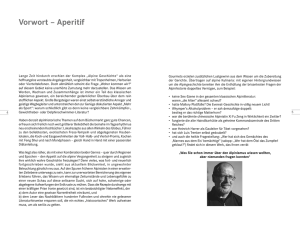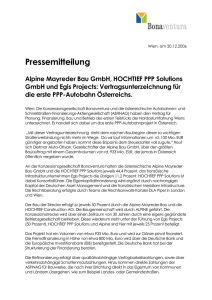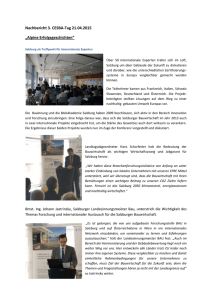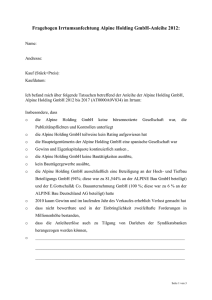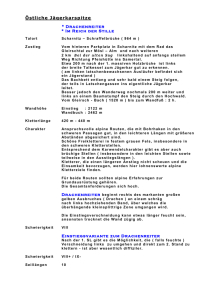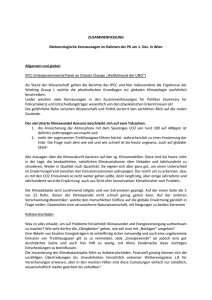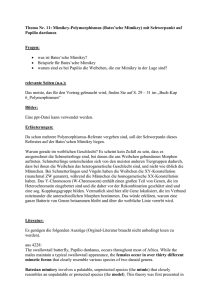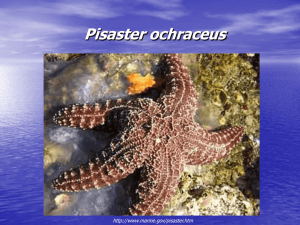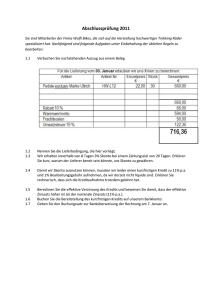P = Google Premium machine translation, S = standard machine
Werbung
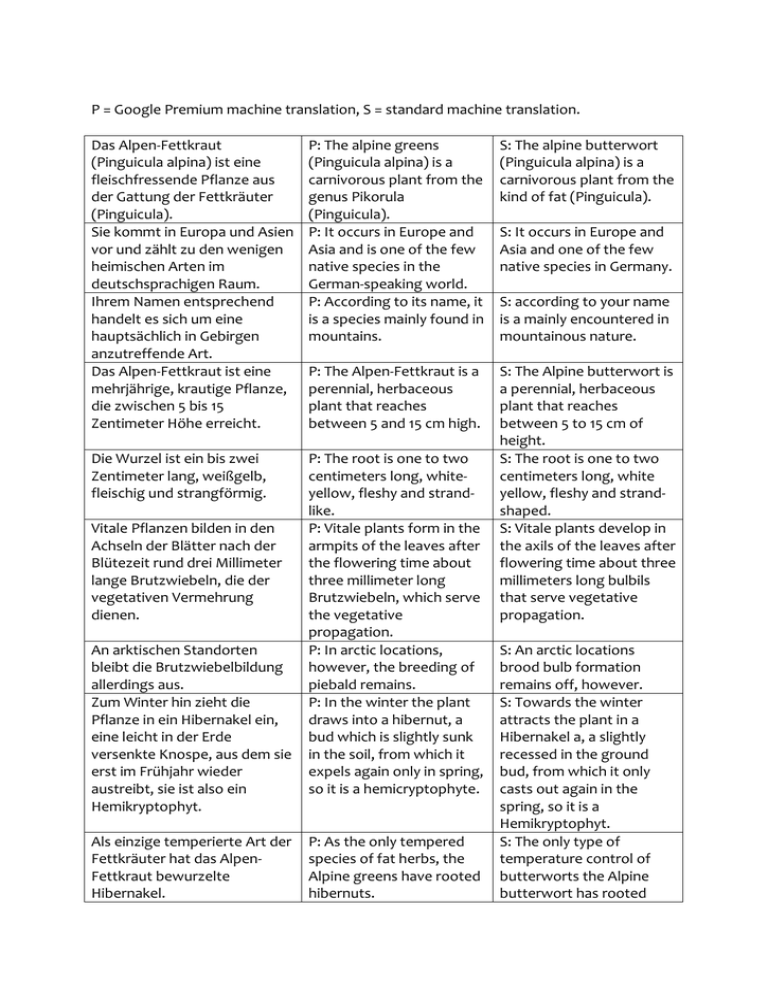
P = Google Premium machine translation, S = standard machine translation. Das Alpen-Fettkraut (Pinguicula alpina) ist eine fleischfressende Pflanze aus der Gattung der Fettkräuter (Pinguicula). Sie kommt in Europa und Asien vor und zählt zu den wenigen heimischen Arten im deutschsprachigen Raum. Ihrem Namen entsprechend handelt es sich um eine hauptsächlich in Gebirgen anzutreffende Art. Das Alpen-Fettkraut ist eine mehrjährige, krautige Pflanze, die zwischen 5 bis 15 Zentimeter Höhe erreicht. P: The alpine greens (Pinguicula alpina) is a carnivorous plant from the genus Pikorula (Pinguicula). P: It occurs in Europe and Asia and is one of the few native species in the German-speaking world. P: According to its name, it is a species mainly found in mountains. S: The alpine butterwort (Pinguicula alpina) is a carnivorous plant from the kind of fat (Pinguicula). P: The Alpen-Fettkraut is a perennial, herbaceous plant that reaches between 5 and 15 cm high. Die Wurzel ist ein bis zwei Zentimeter lang, weißgelb, fleischig und strangförmig. P: The root is one to two centimeters long, whiteyellow, fleshy and strandlike. P: Vitale plants form in the armpits of the leaves after the flowering time about three millimeter long Brutzwiebeln, which serve the vegetative propagation. P: In arctic locations, however, the breeding of piebald remains. P: In the winter the plant draws into a hibernut, a bud which is slightly sunk in the soil, from which it expels again only in spring, so it is a hemicryptophyte. S: The Alpine butterwort is a perennial, herbaceous plant that reaches between 5 to 15 cm of height. S: The root is one to two centimeters long, white yellow, fleshy and strandshaped. S: Vitale plants develop in the axils of the leaves after flowering time about three millimeters long bulbils that serve vegetative propagation. Vitale Pflanzen bilden in den Achseln der Blätter nach der Blütezeit rund drei Millimeter lange Brutzwiebeln, die der vegetativen Vermehrung dienen. An arktischen Standorten bleibt die Brutzwiebelbildung allerdings aus. Zum Winter hin zieht die Pflanze in ein Hibernakel ein, eine leicht in der Erde versenkte Knospe, aus dem sie erst im Frühjahr wieder austreibt, sie ist also ein Hemikryptophyt. Als einzige temperierte Art der Fettkräuter hat das AlpenFettkraut bewurzelte Hibernakel. P: As the only tempered species of fat herbs, the Alpine greens have rooted hibernuts. S: It occurs in Europe and Asia and one of the few native species in Germany. S: according to your name is a mainly encountered in mountainous nature. S: An arctic locations brood bulb formation remains off, however. S: Towards the winter attracts the plant in a Hibernakel a, a slightly recessed in the ground bud, from which it only casts out again in the spring, so it is a Hemikryptophyt. S: The only type of temperature control of butterworts the Alpine butterwort has rooted Die fünf bis acht fleischigen, hellgrünen bis rötlichen, elliptisch bis lanzettlichen, länglichen Blätter bilden eine flach am Boden liegende Rosette mit bis zu sechs Zentimeter Durchmesser. An der Oberfläche sind die Blätter klebrig vom Fangsekret, mit dem sie kleine Insekten fangen. Sobald Beute erzielt wird, wird diese durch Enzyme verdaut, welche von Drüsen aus der Blattoberfläche ausgeschieden wird, die allerdings entlang der Mittelrippe der Blätter fehlen. Die Blätter sind zur Unterstützung des Fangs sehr beweglich und können sich bis fast zur Blattmitte weit einrollen. Unter starker Sonneneinstrahlung färben sich die Blätter rötlich ein. Das Alpen-Fettkraut blüht das erste Mal erst nach mehreren Jahren. Ab April bis Juli wachsen aus der Mitte der Rosette bis zu acht, selten sogar bis zu dreizehn Blütenstände mit Einzelblüten, die bis zu zwölf Zentimeter hoch werden. Die zygomorphen Blüten sind 10 bis 16 Millimeter lang, mit einem kurzen gelbgrünen Sporn und bestehen aus einer dreilappigen Unterlippe und zweilappigen Oberlippe. Sie sind weiß mit einem in Form und Größe variablem, Hibernakel. P: The five to eight fleshy, S: The five to eight fleshy, light green to reddish, light green to reddish, elliptical to lanceolate, elliptic to lanceolate, elongated leaves form a oblong leaves form a flat rosette of up to six rosette lying on the centimeters in diameter ground with up to six lying flat on the ground. centimeters in diameter. P: On the surface the S: On the surface, the leaves are sticky from the leaves are sticky from the catch secret, with which catch secretion, with the they catch small insects. catch small insects. P: Once prey is achieved, S: Once prey is achieved, it this is digested by enzymes is digested by enzymes excreted by glands from secreted by glands from the leaf surface, which, the sheet surface that are however, are absent along missing, however, along the central rib of the the midrib of the leaves. leaves. P: The leaves are very S: The leaves are very mobile to support the mobile in support of catch and can roll up fishing and can be rolled almost to the center of the up far almost to midrib. leaf. P: The leaves are reddish in S: Under strong sunlight, strong sunlight. the leaves turn a reddish color. P: The alpine greens S: The Alpine butterwort flourish for the first time flowers for the first time after several years. after several years. P: From April to July, from S: From April to July the middle of the rosette growing from the center grow up to eight, rarely of the rosette up to eight, even up to thirteen often even up to thirteen inflorescences with inflorescence with individual flowers, which individual flowers, which grow up to twelve are up to twelve centimeters high. centimeters high. P: The zygomorphic S: The zygomorphen flowers are 10 to 16 flowers are 10 to 16 millimeters long, with a millimeters long, with a short yellow-green spur short yellow green spurs and consist of a threeand consist of a threelobed lower lip and twolobed lower lip and twolobed upper lip. lobed upper lip. P: They are white with a S: They are white with a variable yellow and yellow variable in shape and size, gelben Schlundfleck. Die Blüten sind protogyn, das heißt die weiblichen Narben reifen vor den männlichen Antheren, sie werden von Fliegen bestäubt. Die sechs bis neun Millimeter langen und zwei bis drei Millimeter breiten, eilänglichen, spitz zulaufenden Kapselfrüchte tragen reichlich staubfeine, rostbraune Samen. spot. P: The flowers are protogyn, that is the female scars mature before the male anthers, they are pollinated by flies. P: The six to nine millimeters long and two to three millimeters wide, hasty, tapering capsule fruits are rich in dusty, rusty seeds. yellow throat patch. S: The flowers are protogyn, ie the female scars mature before the male anthers, they are pollinated by flies. S: The six to nine millimeters long and two to three millimeters wide, eilänglichen tapered capsule fruit abundant dust fine, rust-brown seeds. Die Chromosomenzahl der Art P: The chromosome S: The chromosome ist 2n = 32. number of the species is 2n number of the species is = 32. 2n = 32nd Die Pflanze hat in Europa zwei P: The plant has two S: The plant has two Verbreitungsschwerpunkte, spread points in Europe, centers of distribution, einmal in den Alpen (vor allem once in the Alps (especially even in the Alps (especially den Randalpen) und des the Randalpen) and the edge of the Alps) and Weiteren im äußersten, further in the extreme further in the extreme, subarktischen Norden subarctic north of subarctic northern Skandinaviens. Scandinavia. Scandinavia in Europe. Ihre Grenzen erreicht die Art P: It reaches its limits in the S: Your limits are reached, im Westen in den Pyrenäen west in the Pyrenees and the Art in the West in the sowie im Osten in den in the east in the Pyrenees and in the east in Karpaten, ist aber verstreut Carpathians, but is the Carpathians, but is auch als Glazialrelikt im scattered in the Baltic scattered as glacial relict in Baltikum sowie auf dem States as well as in the the Baltics and the Balkans Balkan zu finden (Slowakei, Balkans (Slovakia, Poland, to find (Slovakia, Poland, Polen, Ungarn, Rumänien, Hungary, Romania, Hungary, Romania, Slowenien, Kroatien). Slovenia, Croatia). Slovenia, Croatia). Voreiszeitlich war das AlpenP: However, in the past, S: Voreiszeitlich the Alpine Fettkraut jedoch in Asien the alpine greens were butterwort, however, was beheimatet, wo es bis heute in home to Asia, where they based in Asia, where it Sibirien, in China und überall im are still found in Siberia, occurs today in Siberia, in Himalaya (Nepal, Tibet, Indien) China and throughout the China and throughout the vorkommt. Himalayas (Nepal, Tibet, Himalayas (Nepal, Tibet, India). India). Im deutschsprachigen Raum P: In the German-speaking S: In German-speaking findet sich die Art nicht nur in world the species is found countries, there is the way der Schweiz und außer in Wien not only in Switzerland but not only in Switzerland zerstreut überall in Österreich also in Vienna scattered all and except in Vienna (wo Vorkommen abseits der over Austria (where scattered everywhere in Alpen Glazialrelikte sind und occurrences off the Alps Austria (where deposits nicht etwa von den Alpen are glacial relics and do not off the Alps are glacial ausstrahlen), sondern auch in radiate from the Alps) but relicts and radiate not Deutschland, wo sie neben dem Gemeinen Fettkraut (Pinguicula vulgaris) die einzige vorkommende Fettkrautart ist. Die Art findet sich in Höhen bis zu 4100 Meter über dem Meeresspiegel an vollsonnigen Standorten. Die Habitate haben alkalische bis neutrale, sickernasse Böden. Die Pflanze ist aber auch ungewöhnlich trockenheitstolerant für eine Fettkrautart temperierter Zonen. Das Alpen-Fettkraut ist typisch für subalpine Rieselfluren, Quellmoore und alpine Steinrasen. Es tritt in alpinen Lagen häufig in Begleitung von PolsterSegge, Alpen-Sonnenröschen, Schlangen-Knöterich, Silberwurz und dem Kopfigen Läusekraut auf. Hier findet es sich hauptsächlich in den Pflanzengesellschaften des Verbandes Seslerion albicantis (Alpine Blaugras-Rasen) und der Assoziation Caricetum firmae (Polsterseggen-Rasen). Bei collinen bis montanen Vorkommen wird es von Schwarzem Kopfried, Rostrotem Kopfried, SumpfStendelwurz, Löffelkraut, aber auch dem Gemeinen Fettkraut begleitet. Hier findet es sich schwerpunktmäßig in den Pflanzengesellschaften der also in Germany where they are found alongside the common greedy (Pinguicula Vulgaris) is the only occurring type of greens. P: The species is found in heights of up to 4100 meters above sea level at full sunrises. P: The habitats have alkaline to neutral, leach soil. P: However, the plant is also unusually droughttolerant for a type of greasy herbicide. from the Alps), but also in Germany, where she next to the commons butterwort (Pinguicula vulgaris) is the only occurring Fettkrautart. S: The species can be found at altitudes up to 4100 meters above sea level to full sun. S: The habitats have alkaline to neutral, sickernasse floors. S: However, the plant is also unusual drought tolerant for a Fettkrautart temperate zones. P: The Alpen-Fettkraut is typical for subalpine streams, spring marshes and alpine stone lawns. P: It occurs in alpine locations often accompanied by upholstery sedge, alpine siesta, snake-knotweed, silvery spire and the headed louse-herb. P: It is mainly found in the plant associations of the Association Seslerion albicantis (Alpine Blaugras Lawn) and the association Caricetum firmae (Polsterseggen-Rasen). S: The Alpine butterwort is typical of subalpine Rieselfluren, moors and alpine stone lawn. S: It occurs in Alpine areas often accompanied by Carex firma, Alpine Rockrose, Bistort, Avens and capitate lousewort on. S: It is mainly found in the plant communities of the Association Seslerion albicantis (Alpine Blue Grass Turf) and the Association Caricetum company e (cushion harrows lawn). P: In colline to montane S: In hill and montane occurrences, it is occurrence rust red head accompanied by black Ried, Marsh Helleborine, headed, rusty headed, scurvy grass, but also the swamp-sedel, spoon-herb, commons Fettkraut it is of but also the common black schoenus greasy. accompanied. P: Here it is found mainly in S: It is found mainly in the the plant associations of plant communities of the the associations Caricion associations Caricion Verbände Caricion davallianae (Kalk-Flachmoor, Davallseggen-Sumpf) und Cratoneurion commutati (KalkQuellflur). In den Allgäuer Alpen steigt es im Tiroler Teil östlich des Karjoches bis zu 2167 m Meereshöhe auf. Das Alpen-Fettkraut ist wegen seiner geographisch weiten Verbreitung nicht unmittelbar gefährdet. davallianae (KalkFlachmoor, DavallseggenSumpf) and Cratoneurion commutati (KalkQuellflur). P: In the Allgäu Alps it rises up to 2167 m above sea level in the Tyrolean part east of the Karjoches. P: The alpine greens are not directly endangered because of their geographical distribution. In Deutschland ist es jedoch selten und durch die Bundesartenschutzverordnung besonders geschützt. P: In Germany, however, it is rare and particularly protected by the Federal Protection Ordinance. In der Schweiz ist es teils auf kantonaler Ebene geschützt, gilt allerdings weitestgehend als ungefährdet. In Österreich gilt es nur im pannonischen Gebiet und im Nördlichen Alpenvorland als regional gefährdet. P: In Switzerland, it is partly protected at the cantonal level, but it is largely unaffected. P: In Austria it is only in the Pannonian region and in the Northern Alpine foothills as a regionally endangered. P: Folk medicine did not differentiate between the various types of fatcorpuscles, but it was effective against wounds, tumors, sciatica, liver disorders, and stomach, breast, and lung diseases. P: Their usefulness against these diseases is attributed to the cinnamic acid contained in the plant. Die Volksmedizin unterschied die verschiedenen Arten der Fettkräuter nicht weiter, setzte sie aber gegen Wunden, Geschwülste, Ischialgie, Leberleiden und Magen-, Brust- und Lungenerkrankungen ein. Ihr Nutzen gegen die genannten Krankheiten wird auf die in der Pflanze enthaltene Zimtsäure zurückgeführt. 1583 unterschied Clusius in seiner „Historia stirpium rariorum per Pannoniam, Austriam“ bereits zwei Formen, eine blaublühende (= Gemeines Fettkraut, Pinguicula P: In 1583, Clusius distinguished two forms, a blue-green (Pinguicula vulgaris), and a whiteflowered (= alpine greenskin), in his "Historia davallianae (lime-fen, Davallseggen Marsh) and Cratoneurion commutati (lime source hallway). S: In the Allgäu Alps it rises in the Tyrolean part east of Karjoches up to 2167 m above sea level. S: The Alpine butterwort is not in immediate danger because of its geographically widespread. S: In Germany, however, it is rare and especially protected by the federal protection of species regulation. S: In Switzerland it is partly protected at cantonal level, applies, however, largely as endangered. S: it applies in Austria only in the Pannonian region and endangered the Northern foothills as regionally. S: Folk medicine distinguished the different types of fat herbs not, but used them against wounds, tumors, sciatica, liver disease and stomach, breast and lung diseases. S: Your benefit against such diseases is attributed to the cinnamic acid contained in the plant. S: 1583 differed Clusius in his "Historia stirpium rariorum per Pannoniam, Austriam" already two forms, a blue-flowering (= Pinguicula vulgaris, vulgaris) und eine weißblühende (= AlpenFettkraut). 1753 nahm Linné diese in seiner „Species Plantarum“ gemeinsam mit Pinguicula villosa und Pinguicula lusitanica auf. Seither sind zahlreiche Untergattungen, Varietäten und Formen des AlpenFettkrautes beschrieben worden, heutzutage wird jedoch keines dieser Taxa mehr akzeptiert. Das Alpen-Fettkraut ist (von der äußerst seltenen Pinguicula crystallina abgesehen) die einzige europäische Art, die nicht der Sektion Pinguicula angehört. Es gehört stattdessen zur Sektion Micranthus, deren Typusart es ist und deren drei andere Mitglieder in Russland, Nordsibirien und Japan beheimatet sind. Obwohl also nicht unmittelbar verwandt, hybridisiert das Alpen-Fettkraut in Europa (Österreich, Finnland, Schweden) in der Natur mit dem Gemeinen Fettkraut (Pinguicula × hybrida). stirpium rariorum per Pannoniam, Austriam." P: In 1753 Linné recorded these in his "Species Plantarum" together with Pinguicula villosa and Pinguicula lusitanica. P: Since then numerous sub-genera, varieties and forms of the alpine greens have been described, but now none of these taxa are accepted. P: Apart from the extremely rare pinguicula crystallina, the alps are the only European species which does not belong to the section pinguicula. P: It belongs instead to the section Micranthus, whose type is it and whose three other members are located in Russia, Nordsibirien and Japan. P: Although not directly related, the alpine greens in Europe (Austria, Finland, Sweden) hybridize in nature with the common fat (Pinguicula × hybrida). Pinguicula vulgaris) and a white flowering (= Alpine butterwort). S: 1753 took Linnaeus this in his "Species Plantarum" together with Pinguicula villosa and Pinguicula lusitanica on. S: Since then, numerous sub-genres, varieties and forms of alpine fat herb have been described, but nowadays none of these taxa is more accepted. S: The Alpine butterwort is (apart from the extremely rare Pinguicula crystallina) the only European style, which is not part of the section Pinguicula. S: It belongs instead to Section micranthus whose type species it is and their three other members in Russia, northern Siberia and Japan are located. S: Thus, although not directly related, hybridized the Alpine butterwort in Europe (Austria, Finland, Sweden) in the nature of the terrible fat (Pinguicula × hybrida).

